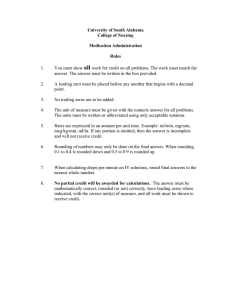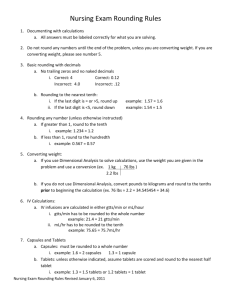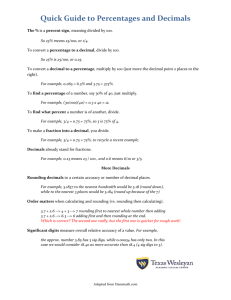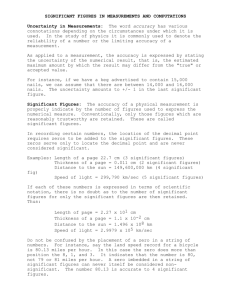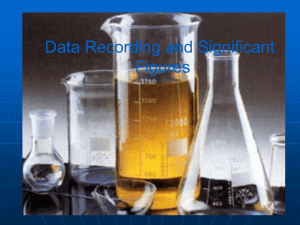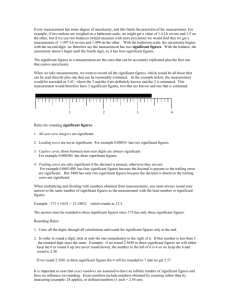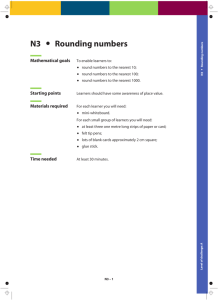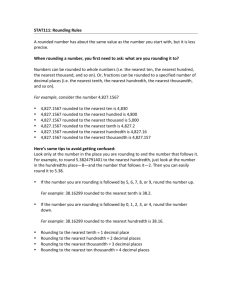Rounding Rules
advertisement
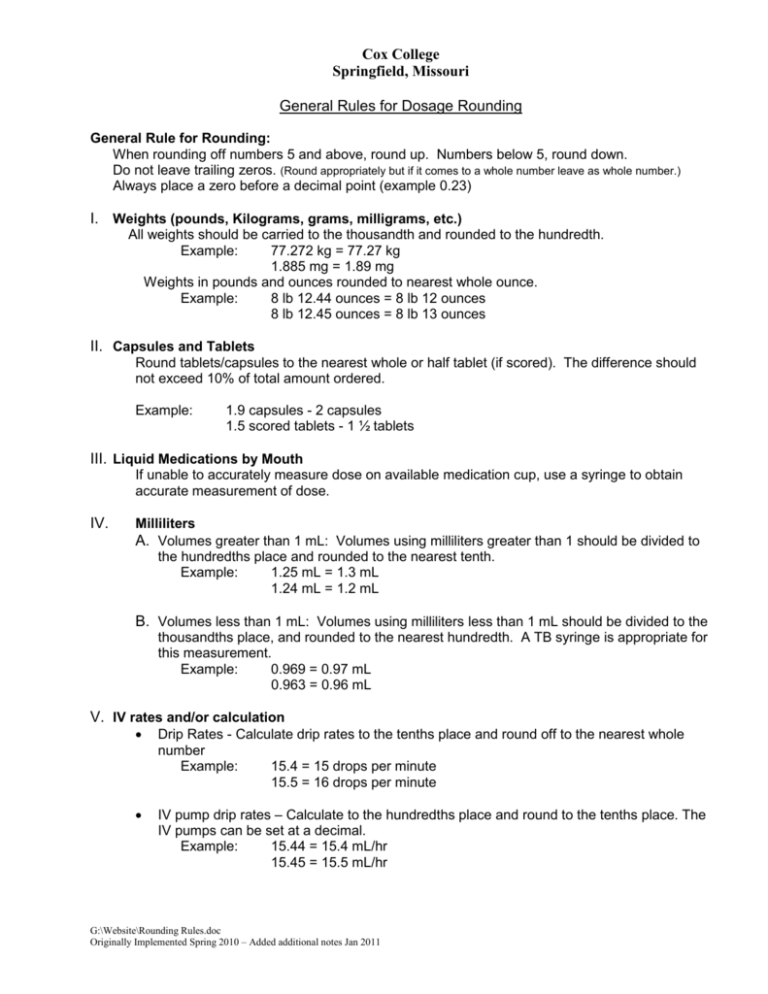
Cox College Springfield, Missouri General Rules for Dosage Rounding General Rule for Rounding: When rounding off numbers 5 and above, round up. Numbers below 5, round down. Do not leave trailing zeros. (Round appropriately but if it comes to a whole number leave as whole number.) Always place a zero before a decimal point (example 0.23) I. Weights (pounds, Kilograms, grams, milligrams, etc.) All weights should be carried to the thousandth and rounded to the hundredth. Example: 77.272 kg = 77.27 kg 1.885 mg = 1.89 mg Weights in pounds and ounces rounded to nearest whole ounce. Example: 8 lb 12.44 ounces = 8 lb 12 ounces 8 lb 12.45 ounces = 8 lb 13 ounces II. Capsules and Tablets Round tablets/capsules to the nearest whole or half tablet (if scored). The difference should not exceed 10% of total amount ordered. Example: 1.9 capsules - 2 capsules 1.5 scored tablets - 1 ½ tablets III. Liquid Medications by Mouth If unable to accurately measure dose on available medication cup, use a syringe to obtain accurate measurement of dose. IV. Milliliters A. Volumes greater than 1 mL: Volumes using milliliters greater than 1 should be divided to the hundredths place and rounded to the nearest tenth. Example: 1.25 mL = 1.3 mL 1.24 mL = 1.2 mL B. Volumes less than 1 mL: Volumes using milliliters less than 1 mL should be divided to the thousandths place, and rounded to the nearest hundredth. A TB syringe is appropriate for this measurement. Example: 0.969 = 0.97 mL 0.963 = 0.96 mL V. IV rates and/or calculation • Drip Rates - Calculate drip rates to the tenths place and round off to the nearest whole number Example: 15.4 = 15 drops per minute 15.5 = 16 drops per minute • IV pump drip rates – Calculate to the hundredths place and round to the tenths place. The IV pumps can be set at a decimal. Example: 15.44 = 15.4 mL/hr 15.45 = 15.5 mL/hr G:\Website\Rounding Rules.doc Originally Implemented Spring 2010 – Added additional notes Jan 2011 Additional Notes: Equivalents: 1 kilogram (kg) = 1000 Grams (GM) 1 Gram (g) = 1000 milligrams (mg) 1 mg = 1000 micrograms (mcg) 1 Liter (L) = 1000 milliliters (mL) 1 mL = 1 cubic centimeter (cc) 30 mL = 1 ounce (oz) 65 mg = 1 grain (gr) 2.2 pounds (lb) = 1 kilogram (KG) Must note Zero before decimals: • If a decimal fraction is not preceded by a whole number, a zero must be used to emphasize that the number is a fraction. For example: 0.32 vs .32 No trailing Zeros • Extra zeros on the end of decimal fractions are omitted to prevent errors. for example: 10 vs 10.0 12.3 vs 12.30 Labeling answers: • All answers but be properly labeled or the question will be counted wrong! For example 4.62 mcg/kg/min vs. 4.62 0.17 mL vs 0.17 7.5 mg vs 7.5 80 mL/hr vs 80 20 drops/min vs 20 G:\Website\Rounding Rules.doc Originally Implemented Spring 2010 – Added additional notes Jan 2011

